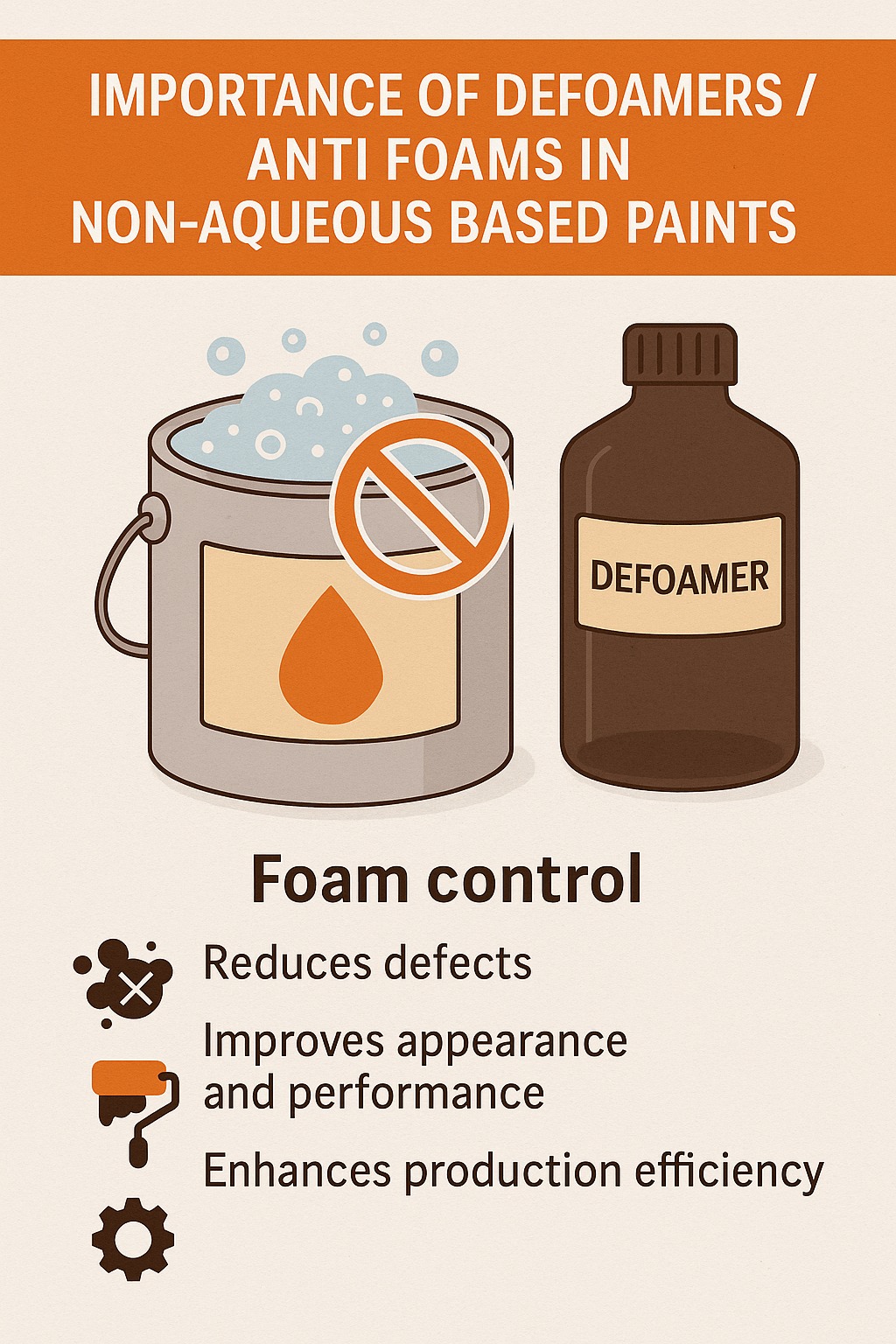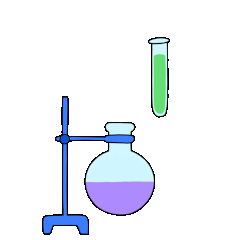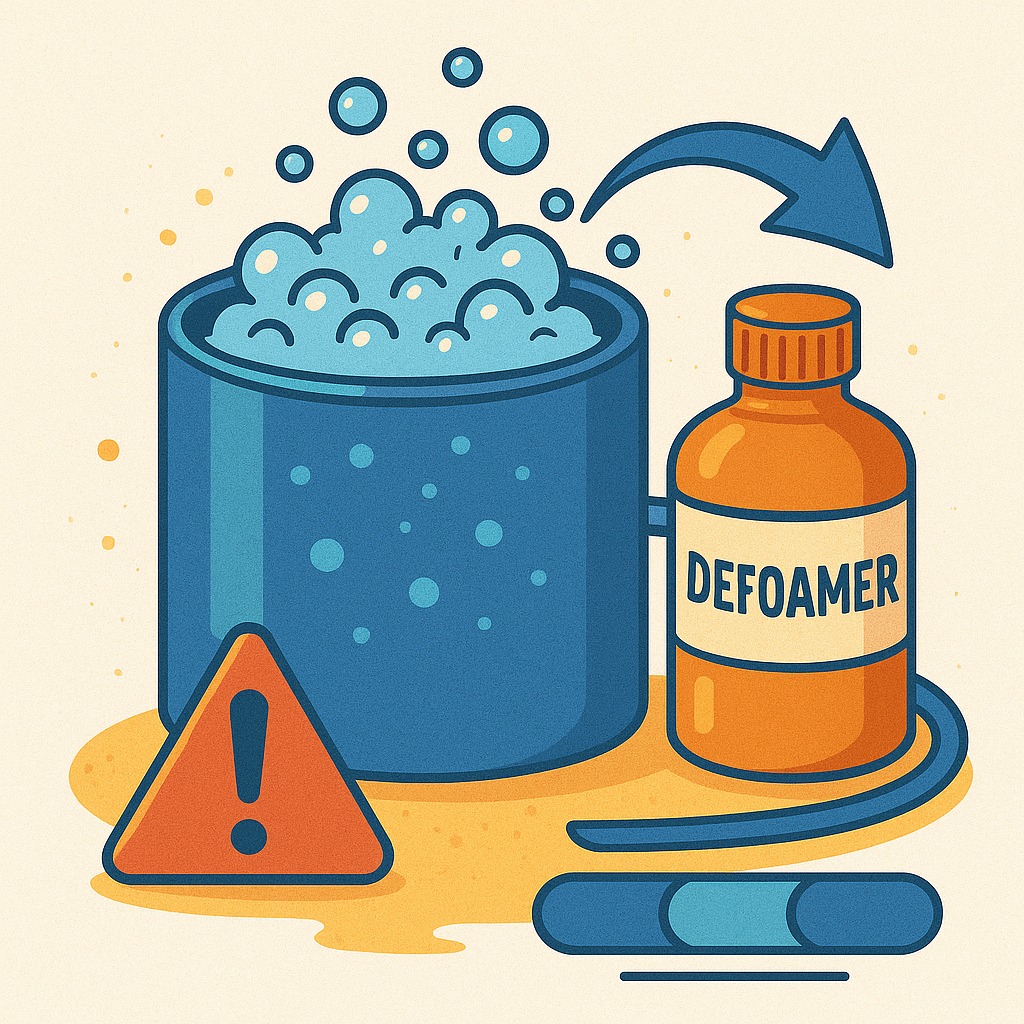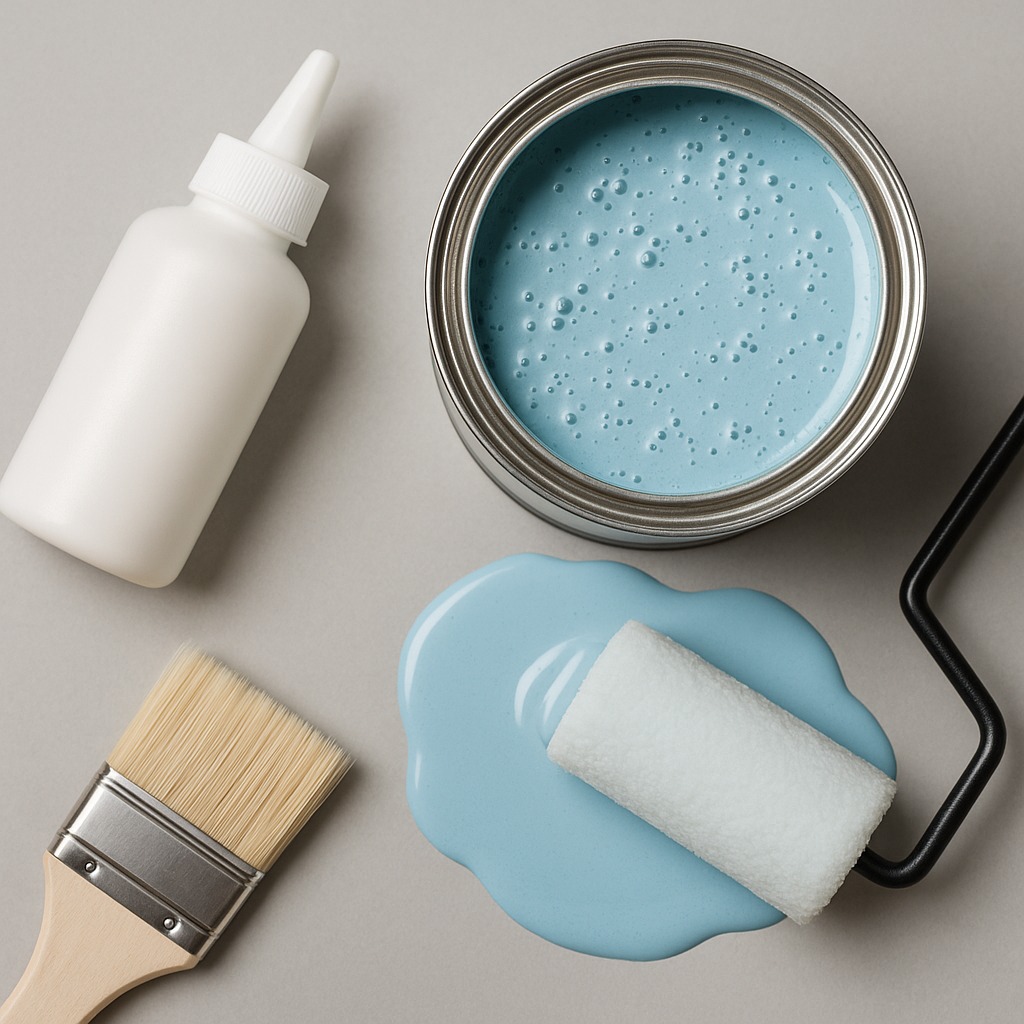
The Importance of Defoamers/Antifoams in Non-Aqueous Based Paints

The Importance of Defoamers/Antifoams in Non-Aqueous Based
Paints
In the
complex world of coatings and paints, achieving the perfect finish is both a
science and an art. One often overlooked but critically important factor that
plays a decisive role in non-aqueous based paints (solvent-based paints) is the
use of defoamers and antifoams. These additives might constitute a small
portion of the formulation by weight, but their impact on performance,
aesthetics, and production efficiency is enormous.
Understanding
the Foam Challenge in Non-Aqueous Paints
Why
Does Foam Form?
Foam
in solvent-based paints is primarily caused by:
- · High shear mixing and agitation during
manufacturing and application.
- · Incorporation of air when using equipment like
high-speed dispersers or during spray application.
- · Surfactants and wetting agents used for pigment
dispersion often increase the foam tendency.
- · Solvent volatility, where rapid solvent
evaporation at the surface can trap microbubbles within the film.
Consequences
of Foam in Solvent-Based Paints
Uncontrolled
foam can lead to several critical defects:
· Surface imperfections such as craters,
pinholes, and fisheyes.
· Loss of gloss and uneven film appearance.
· Reduced film strength due to entrapped air
pockets.
· Poor leveling and flow, resulting in aesthetic
and performance issues.
· Application problems like spray gun spitting,
pump cavitation, or roller marks.
· Longer production times due to slow deaeration
in storage tanks and filling lines.
The
Role of Defoamers and Antifoams
What
Are Defoamers?
Defoamers
(sometimes called antifoams) are specialty additives designed to prevent foam
formation (anti-foam action) and quickly break existing foam (defoaming action)
during both manufacturing and application stages.
How Do
They Work?
Defoamers
typically act through:
- · Incompatibility with the paint medium, making
them migratto the air-liquid interface, where foam forms.
- · Reducing surface tension gradients, causing
foam bubbles to collapse.
- · Spreading over foam lamellae, weakening the bubble
wal and rupturing it.
- · Providing hydrophobic particles or oils, which destabilize foam.
Types
of Defoamers for Non-Aqueous Paints
Mineral
Oil-Based Defoamers
- · Widely used for their cost-effectiveness and
broad compatibility.
Silicone-Based
Defoamers
- · Highly efficient at low doses, offering
long-lasting performance and excellent foam control during both manufacturing
and application.
Polymer-Based
Defoamers
- · Tailored for high-end solvent systems like
automotive or industrial coatings where recoatability and surface appearance are critical.
Wax-Containing
Defoamers
- · Useful in specific systems where extra foam
knockdown strength is required.
Key
Benefits of Using Defoamers in Non-Aqueous Paints
|
Benefits |
Impact |
|
Faster
production and filling |
Reduces
wait time for foam collapse |
|
Improved
surface appearance |
Eliminates
craters, pinholes, and defects |
|
Consistent
film thickness |
No
trapped air means uniform dry film |
|
Enhanced
gloss and leveling |
Smooth
and defect-free surfaces |
|
Improved
application |
Better
flow from spray, roller, or brush |
Formulation
Considerations
Choosing
the right defoamer for non-aqueous systems requires careful attention to:
- · Compatibility with the resin and solvent system
- · Viscosity profile of the paint
- · Application method (spray, brush, dip)
- · Film appearance requirements (especially for
high-gloss or clear coatings)
- · Post-application recoatability and intercoat
adhesion
Common
Application Areas
Defoamers
are used in various types of non-aqueous coatings including:
- · Automotive coatings
- · Industrial maintenance paints
- · Wood coatings
- · Protective and marine coatings
- · Packaging and printing inks
- · General-purpose solvent-based enamels
Best Practices for Defoamer Use in Non-Aqueous Paints
· Start with a lab evaluation using small-scale let-downs and check for both defoaming efficiency and surface defects
· Add in stages if needed, with an initial portion during pigment dispersion and the balance in the let-down stage
· Monitor for side effects like cratering or haze
· Run long-term storage stability tests to ensure no separation, sedimentation, or loss of effectiveness over time
The
Harmony Advantage
In the
world of non-aqueous paints, a good defoamer is the silent hero - ensuring
smooth production and flawless finishes by eliminating foam-related challenges.
At Harmony Group, we understand that every coating system demands precision and
reliability. That’s why our defoamer range is carefully engineered to balance
compatibility, efficiency, and long-term performance across diverse
solvent-based applications.
As
formulations continue to advance for durability, sustainability, and
aesthetics, we remain committed to providing innovative, high-performance
additives that empower manufacturers to achieve consistent quality and
efficiency. With Harmony Group, you don’t just get defoamers - you gain a
trusted partner in delivering excellence to your customers.



-in-aqueous-based-paints.jpeg)